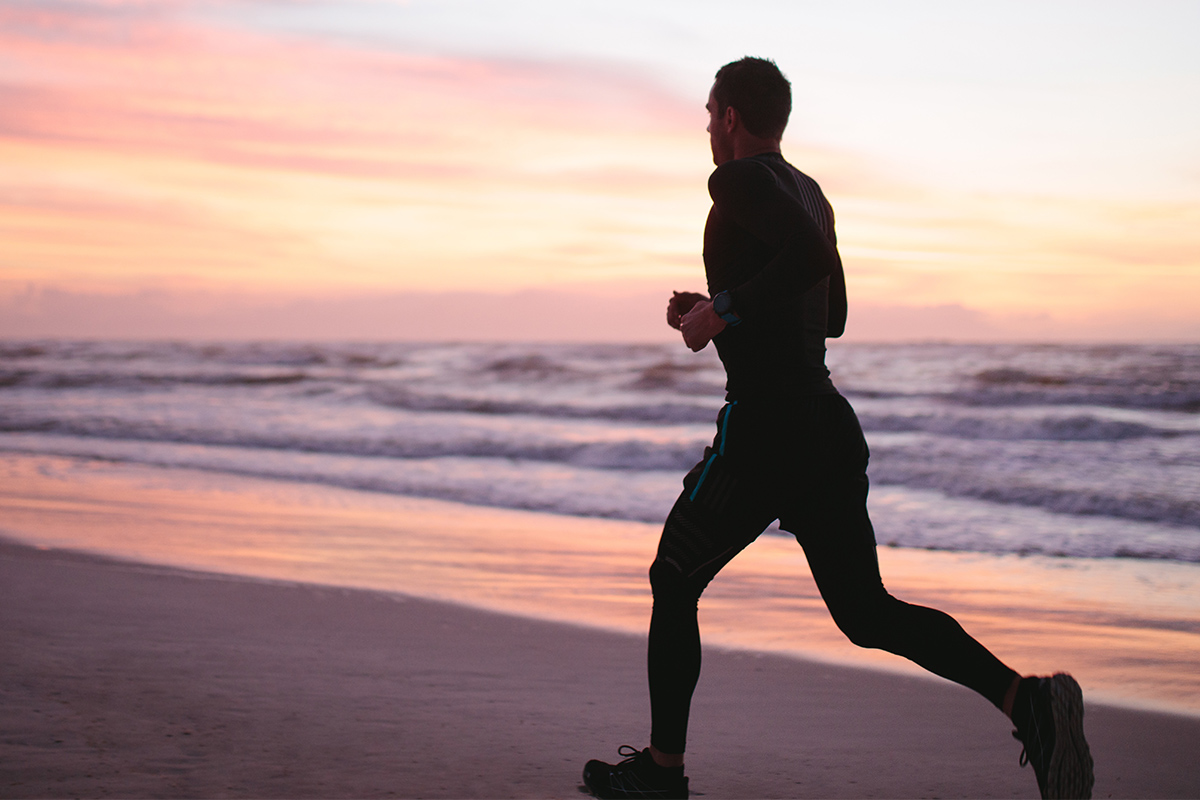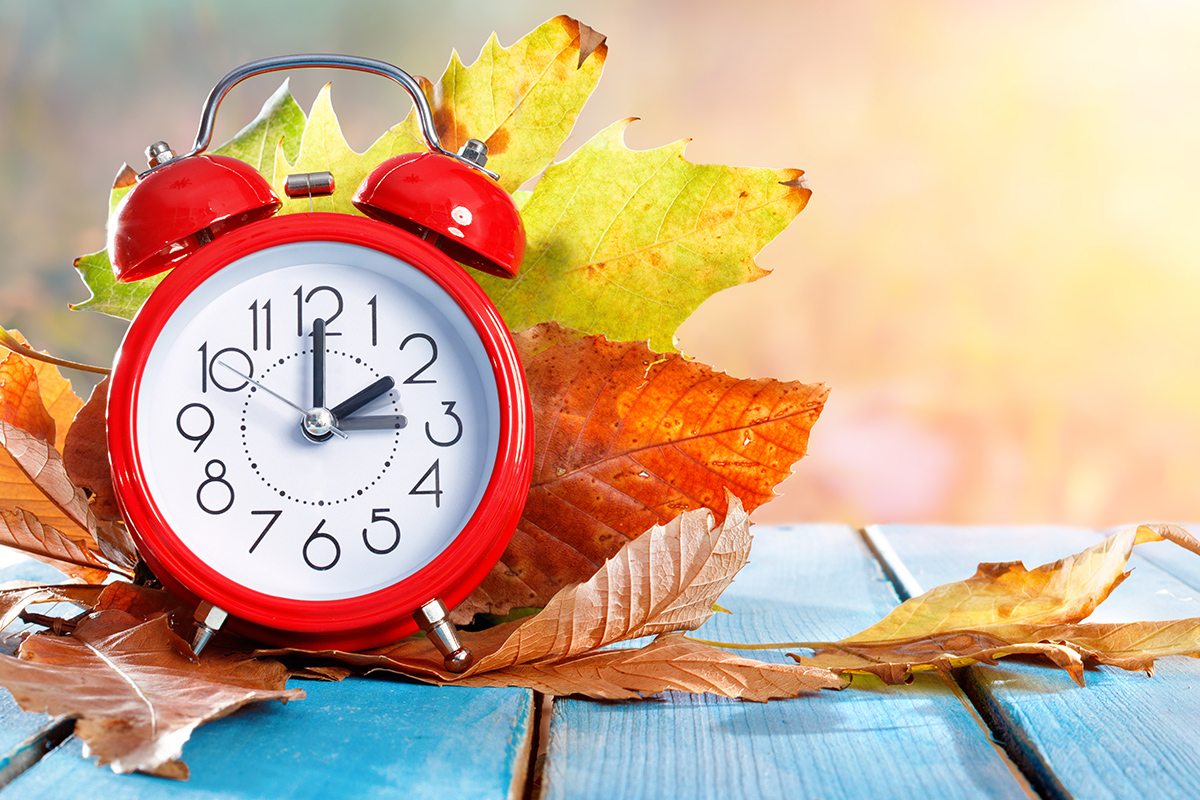From Craving Chocolate to Paving New Roads
Waleska is a mom with 2 part-time jobs who had a love for chocolate. Despite the time constraints and sweet temptations, she lost over 60 pounds!

“Throughout our sessions [my trainer] was able to tailor specific routines for me and quickly adjust as required for my preferences and accommodate for chronic injuries.”
An Unexpected Turning Point
Martyn D. is an LA Fitness member who changed his lifestyle when he least expected. With a busy work schedule and a long-standing shoulder injury, Martyn found himself “in a slump, with little to no change in [his] routines and inspiration.”
One day, he won a few free training sessions at LA Fitness and was hooked ever since. “I enjoyed them so much I decided to continue for the 6-month program,” Martyn says.
If you’re hesitant to start a workout routine due to an injury, or if you’re in an emotional funk, Martyn’s story is the perfect example to showcase how proper guidance from a qualified instructor can help you move towards your goals.
Personal Training Made a Big Difference
The key to personal training is the fact that it is customized for you. It’s not just about having someone tell you what to do.
Martyn appreciated that his trainer, Patrick, “was approachable and easy to talk to” and that he took the time to really flesh out his personal fitness goals.

“Throughout our sessions he was able to tailor specific routines for me and quickly adjust as required for my preferences and accommodate for chronic injuries,” explains Martyn, “he was also flexible with my schedule when I had limited time with work.”
Overcoming Injuries
Injuries can pose a myriad of obstacles when it comes to working out. Some people will advise you to use the muscles lightly, others will advise you to avoid all activities that may strain the muscles further.
One advantage of having a qualified trainer is in your access to their knowledgebase on muscle recovery and on proper form. Martyn shares that despite a shoulder injury that had been bothering him for years, Patrick “has been able to significantly help by strengthening weak areas and improving [his] form, both of which allow [him] to lift more.”
What’s Next for Martyn?
“Exercising has always been a stress outlet for me with a sense of accomplishment afterwards” says Martyn. However, “the added improvement really boosts those feelings. Call me a glutton for punishment but I plan on staying active for as long as I can. I still browse online videos for different exercises to try out but having a knowledgeable pro on hand is invaluable. Plus, he would not let me slack–off, which I appreciate afterwards.”
Closing Thoughts
Having the help of a personal trainer can make a world of difference. Whether you’re a seasoned athlete who is looking for new ways to test your abilities, or just starting out, some knowledgeable guidance can go a long way. Martyn is living proof that personalized training, paired with a commitment to your goals, can produce real changes that you can be proud of.
Do you have an inspirational story you’d like to share with us? Email us at blog@lafitness.com for a chance to be featured in an upcoming post!
For length and clarity, minor edits – none of which alter the original or intended meaning – have been made to the quotes provided.
Waleska is a mom with 2 part-time jobs who had a love for chocolate. Despite the time constraints and sweet temptations, she lost over 60 pounds!
Many of us pair the idea of aging with decreased mobility and various aches. Yet, Patricia’s story shows us just how wrong that notion can be.
Ann shares how, despite back problems, strokes, and surgeries, she is well on her way to achieving her goal of losing 90 to 100 pounds!

November 7th was National Bittersweet Chocolate and Almonds Day! With this tasty treat still on everyone’s mind, let’s talk about what has been learned about the benefits of this bittersweet indulgence. Perhaps because researchers just wanted to prove that chocolate can be healthy, the work has been done to study its nutrients and their effects on the body.
By now, you may already know some of what they have unearthed. First and foremost, that bittersweet chocolate, that is at least 65% cacao, wins the nutrition battle over milk chocolate. In case you haven’t heard, or if you’d like to know more, allow us to give you a few reasons why you should add some dark chocolate (and almonds) to your snack drawer.

Antioxidants are those agents that help shield your body from free radicals. Free radicals are molecules that can cause cells to lose their ability to function normally.1
Essentially, free radicals hang out in your body with only one electron. Electrons like to be in pairs, so these free radicals seek out healthy atoms in your body to steal one of their electrons. When those healthy atoms lose an electron to a free radical, this causes damage to it.
Antioxidants help by giving free radicals the electron they need so they don’t steal it from other cells.
A study comparing cocoa powder and dark chocolate with super-fruit powders and juices found that the former had the same, or significantly larger, amounts of antioxidants and flavanols!2
The article explains that cacao powder successfully competes with or outperforms the antioxidant power of blueberry, cranberry, and pomegranate powders.2 It’s pretty nice to know that cacao seeds qualify as a super food!

We should back up a bit here, however, because you might be wondering what flavanols are and why you need them.
Flavanols are interesting because, according to a chocolate-making company called Ombar, they are actually very mildly toxic! This toxicity, however, prompts your body to produce more of its own antioxidants.3 This might be why chocolate is able to pack such a healthful punch. Not only does it contain antioxidants, it also stimulates your body’s natural production.
As for almonds, eating them with the skin will get you more antioxidants than eating almonds without the skin.4 You can enjoy them roasted or raw, but the key is in that outer protective layer. Next time you reach for a bar of dark chocolate, choose one that contains unskinned almonds.

The flavanols in dark chocolate are partly responsible for the lowering of your blood pressure,2 while magnesium is behind this benefit in almonds.5 Fortunately, almonds contain 20% of your recommended daily intake of magnesium.5
In dark chocolate, the antioxidants may help your body use its insulin more efficiently, and as a result, this can help lower your blood sugar.6 In almonds, magnesium comes back to play another role. It happens to help control your blood sugar by increasing your insulin sensitivity.5
A study on cocoa’s effects on platelet activation and function concluded that cocoa had “an Aspirin-like effect” on blood.7 Almonds, which are naturally high in Vitamin E, have a blood-thinning effect for this reason.8

A study was conducted to measure the brain’s responses to cognitive tasks after eating flavanol-rich cocoa. The most notable conclusion drawn from this study was that the cocoa significantly increased blood flow to gray matter in the brain.9 The study suggests that this means cocoa flavanols have the potential to aid in the treatment of strokes and dementia.9
Almonds, on the other hand, can help protect the brain from age-related memory problems and neurodegenerative diseases.10 This is because they contain nutrients like tocopherol, folate, mono- and poly-unsaturated fatty acids, and polyphenols. In separate studies, these nutrients have “shown promise as possible dietary supplements to prevent or delay the onset of age-associated cognitive dysfunction.”10
While technically these neurological effects have been observed by researchers, it’s still wise to take this information with a grain of salt. There is not enough information to prove that eating dark chocolate or almonds will improve your brain function by statistically significant numbers.
We think this information just goes to show that what your body needs can be found in an assortment of natural foods and ingredients, whereas highly processed foods strip most of those benefits away.

We’d like to say, after learning the many benefits, that we can eat as much dark chocolate and almonds as we’d like. Unfortunately, we’re too aware of the truth in the statement that “it’s possible to have too much of a good thing.”
Looking closer at what we’ve shared with you so far, you may notice that all the benefits of dark chocolate lie in the cocoa powder. The other ingredients in your chocolate bar, like sugar, sodium, and saturated fat, do more harm than good in large amounts.
The recommended portion of dark chocolate that allows you to reap the benefits and avoid too much of those other ingredients, is about an ounce and a half per day.11 That’s about half or 1/3 of a standard chocolate bar.

As for almonds, the recommended portion is about one ounce, or 23 kernels.12 Because almonds are high in calories, fat, and fiber, eating too many can lead to weight gain as well as gastrointestinal problems from the excess of fiber. So, make sure you’re drinking plenty of water if you’re planning on having more than a small handful.
For more healthy snacking ideas, read our Super Snacking Guide. Or, listen to our podcast on How to Read a Nutrition Label to prepare yourself for your next grocery trip. To access our monthly blog post highlights, subscribe to our newsletter today!
Sources:

November 5th was American Football Day. This year, the regular football season runs from September 5th to December 29th. Your favorite players have been training hard, and whether you’re a die-hard fan or you watch only for the half-time show in February, it’s easy to appreciate the feats of athleticism that take place in every game.
Football players need an impressive amount of strength, cardiovascular endurance, stamina, speed, and agility. If you want the physique and athleticism of a football pro, you’ll need to train like one!
Here are 5 exercises that will work your muscles hard and test your physical limits.

5 Workouts That Test Your Limits


The most recognizable exercise we see football players do in training is the sled tackle. You may not need to be tackling anyone, but the principle of the movement is to learn how to dig deep and use your legs to drive your body forward. A Prowler Sled can be loaded up with weights to intensify your workout and focus your energy without the impact of a tackle.
Alternatively, you can pull the sled with a rope attachment, much like you would pull on a rope in tug-of-war. This flips the focus from your lower body to your upper body and helps you develop a killer grip-strength. For catching a football, rock climbing, scaling a ladder, or opening a jar, having a solid grip is an indicator of good, overall strength.

The Golden Rule of Equation Solving, and what should be the golden rule for exercise: What you do to one side, you must do to the other. Many people will focus only on ab workouts thinking that’s how they’ll get a shredded six-pack. Your back muscles, however, are very much a part of your core strength and stability. Having a strong back enables you to perform other exercises more safely and with more strength and power.
Rows are pretty versatile and can be done with a rowing machine for cardio, or with a barbell or TRX cables for strength building. For total-body fitness, make sure to focus on all the muscles in your body instead of just the ones that receive a lot of hype (like abs, biceps, and glutes). Football athletes don’t want to have any weak points so they can take a fall or a tackle and get back up to go again. Your weekly training regimen should aim for the same comprehensiveness.

Put your speed and agility to the test with agility ladders and do a lot of great things for your ankle strength as well. This is another easily recognizable drill. You may have seen it in training sessions for football, soccer, rugby, and other sports that require quick and precise maneuvering.
An agility ladder is a flat ladder with evenly spaced rungs. You essentially use it to mark the space on the ground where you will step in, out, and around the lines as quickly and as accurately as possible.
To zero in on the agility component, you’ll need to make a point of targeting your ability to stop, start, and change direction with a high response time. This can make for an interesting and focused workout if you have someone calling out direction changes and various instructions to keep you literally “on your toes.”

If you can do a pull-up with added weight, doing a pull-up without it is a whole lot easier, right? Athletes practice under the same principle. In training, they put their bodies through the toughest conditions so that game day feels like child’s play.
One of their most important assets is their cardiovascular and respiratory endurance. The ability to run up and down that field with the added weight of all the padding and gear, takes a lot of serious conditioning!
Suicide Sprints involve sprinting to and from a series of spaced markers. The idea is to sprint to the first marker, touch it, and then sprint back to your starting point. You’ll immediately, sprint to touch the second marker, and then back again to your starting point. You continue doing this until you’ve run to and from all the markers. You can increase the difficulty by adding more markers or setting them farther apart. After giving this exercise a try, you’ll understand the reason for its grim naming.

Another great cardio exercise is walking lunges. With your legs doing most of the work, the work of this large muscle group will have you sweating in no time. This exercise hones-in on your quads and glutes and will teach them to endure prolonged use.
To focus more on strengthening your leg muscles, you’ll need to progressively increase the amount of weight they need to move. You can do this by holding dumbbells or wearing a weighted vest as you go.
For tips on getting your mentality into gear for your workout, read about how you can Approach Your Workout Like an Athlete at Practice. Or, hear from Matt Harrison, LA Fitness member and an elite athlete, on Episode 12 of our Podcast. He shares what changes he made to his lifestyle to go from ordinary to extraordinary. To access our monthly blog post highlights, subscribe to our newsletter today!

Daylight Saving Time ends on Sunday, November 3rd. The clock will turn back 1 hour and, theoretically, you should be gaining an hour of sleep. However, many people end up struggling more as a result of this time change.
The body’s circadian rhythm is the regulator of many important biological processes. The National Sleep Foundation (NSF) explains it as a “24-hour internal clock that is running in the background of your brain and [that] cycles between sleepiness and alertness at regular intervals.”1 It functions best when your sleep and wake habits are kept consistent.1
Generally, this rhythm is what causes sleepiness in the evening as natural light decreases and alertness in the morning when there is plenty of light. Depending on your habits and your environment, you may be accustomed to waking or sleeping in very different light conditions. This is why flights into different time zones, daylight savings adjustments, and late–night events can wreak havoc on your system, your focus, and your memory. Your body must work to alter its entire biological routine.

Another common problem that crops up around the same time as Daylight Savings, is Seasonal Depression.
Also known as Seasonal Affective Disorder, this is a type of depression that begins and ends around the same time every year, usually in the darker and cloudier fall and winter months. This is partly due to reduced sunlight. Less light affects your circadian rhythm, your serotonin levels (which affect your mood) and your melatonin levels (which affect your sleep patterns).2
If you’re not sure whether this is something you are experiencing, you can read through the symptoms on the Mayo Clinic website. A more complete and accurate picture, however, should be sought from a professional with the skills to officially diagnose this disorder.

We are all very well-aware of the effects of caffeine on our ability to sleep. The effects of alcohol on sleep, however, are perhaps not as known.
For a long time, the concept of an alcoholic “nightcap” before bed was popular and promoted as a way to improve your ability to sleep. In an article on alcohol and its relationship to sleep, a quote by researcher Irshaad Ebrahim explains why this is not the case.
Ebrahim states that, while alcohol may help induce sleep, it disrupts the second half of our sleep cycle, particularly the quality of REM sleep.3
REM sleep is important for the storage of memories, for learning, and for balancing our mood.4 A later comment by sleep Specialist Dr. Michael Breus explains that using alcohol as a sleep aid will actually increase the likelihood that you will “sleepwalk, sleep talk, and have problems with your memory.”3
The ultimate takeaway is that caffeine and alcohol are both great disrupters of sleep.

Have you ever noticed that your body will naturally wake up around the time your alarm is supposed to go off, even on the weekends? This is because the body likes to have a rhythm in the way in operates.
You can teach your body to follow a certain schedule by sticking to your sleep and wake times even on days when you don’t have anything-in-particular on your agenda. This will make it easier to adjust as needed.
Dr. Rafael Pelayo recommends changing sleep schedules in 15-minute increments every 2 to 3 days.4 Following this system, you would need about 8 to 12 days to adjust your sleep schedule by one hour. It seems like a long time, but gradually making changes will help your body ease into the new schedule more smoothly than if you attempt to make the switch overnight.

If you wake up at night to use the restroom, having a nightlight will make it easier for you to find your way without having to turn on bright lights or walk into any walls.
Also, if you know you tend to wake up at night feeling thirsty, keep water at your bedside to avoid a walk to the kitchen that can also cause your body to slip into morning-mode.

Certain Wi-Fi capable light bulbs can be set to turn on, or gradually get brighter, around the time you want to wake up. Some lights are really good at mimicking the gradual increase of light that tricks your body into thinking the sun has risen.
As the light filters through your closed eyelids, your body will naturally ease you out of sleep. If you don’t want to invest in a Wi-Fi capable light bulb, turning on the lights as soon as your alarm rings is another way to help kick the sleepiness and help you rise.
To hear from Dr. Bob Davari about the importance of sleep and to get more tips on how to improve your rest, listen to Episode 33 of our Podcast. To access our monthly blog post highlights, subscribe to our newsletter today!

What Happens in the Brain When You’re Afraid?
On a biological level, we know that, when you’re afraid, certain hormones are released in the body to prepare you for a fight–or–flight response. The primary hormones involved in this process include adrenaline (also known as epinephrine), norepinephrine, and cortisol.
These three hormones give your body a boost of energy, channel your focus, and divert blood flow to your major muscle groups. Once this happens, your body is primed to respond to the perceived danger.
If you don’t enjoy the heart-pounding startles, you might wonder why anyone in their right mind would put themselves through this experience on purpose. Yes, the body gets a surge of anxious energy, but you also experience the release of neurotransmitters like dopamine.
Dopamine is what is commonly associated with the brain’s “pleasure center.” It’s a source of the excitement and relief that comes after a scare and when your brain realizes you were never in any real danger. For spook-seekers, this is the experience that makes the scare worthwhile.
What Exactly are the Benefits?

Dr. Margee Kerr, the staff sociologist at ScareHouse, tells The Atlantic all about the reasons why some brains enjoy fear. In the interview, she reminds us that the enjoyment of scaring and being scared goes back to the telling of ghost stories around a campfire, gothic writings of the 19th century, and tales of creatures like the Chupacabra or the Loch Ness Monster. As human beings, we have had this interest for a long time.
Social connections, she explains, are part of the reason we love to be frightened. Happiness and fear both initiate the release of oxytocin (the love hormone), and help us bond with the people we are experiencing these emotions with. Kerr shares an article by Shelley Taylor, Tend and Befriend: Biobehavioral Bases of Affiliation Under Stress, that demonstrates how a special closeness is developed with those who are with us when we are in an excited state. More importantly, it stresses how this can be a very good thing!
When you tend to or receive care from someone in a moment of fear or anxiety, the chance that you will befriend them increases. According to Dr. Kerr, this is because human beings need each other during periods of stress, so the body responds chemically in ways that help form a bond with others who are in the experience with us. Of course, this is limited to the experience being a positive one that does not actually harm you in any way.
This is why you see people huddled together as they tread through a darkened maze or haunted exhibit, and why popcorn-flinging horror movie nights are also enjoyed worldwide.
The Best Place to Enjoy a Good Scare
The best place to get your chills and thrills is someplace that poses no real threat to your safety. You brain needs to know that your body is not in any real danger after your automatic fight-or-flight response kicks in. Dr. Kerr reflects on how many times she’s seen a person scream and jump at the ScareHouse and immediately after start smiling and laughing. It really is interesting to consider how quickly the brain can process our situation and let the rest of our body know if the fear was just a false alarm.
Are There Drawbacks?

As nearly every suspense movie has proven, anything can have a dark side. Maybe don’t drag your friends to a fright-filled attraction if they really don’t want to go. Sometimes the aversion has roots in trauma, PTSD, or phobia. Being conscious of what is age–appropriate is also important. This is because children are often unable to differentiate between feigned danger and what’s real. What you intended to be a fun experience may end up being traumatic for a child. Sometimes, you just have to make a judgment call, but doing so can help ensure that everyone has a good time and is able to enjoy the spooky excitement.
For some tips from our dietitian on how to treat yourself this Halloween without all the guilt, read her post on Tricks and Treats for Halloween Cheats. To access our monthly blog post highlights, subscribe to our newsletter today!
Sources:
Ringo, Allegra. “Why Do Some Brains Enjoy Fear?” The Atlantic, Atlantic Media Company, 31 Oct. 2013, www.theatlantic.com/health/archive/2013/10/why-do-some-brains-enjoy-fear/280938/.
Be the first to know about exclusive
content, deals and promotions